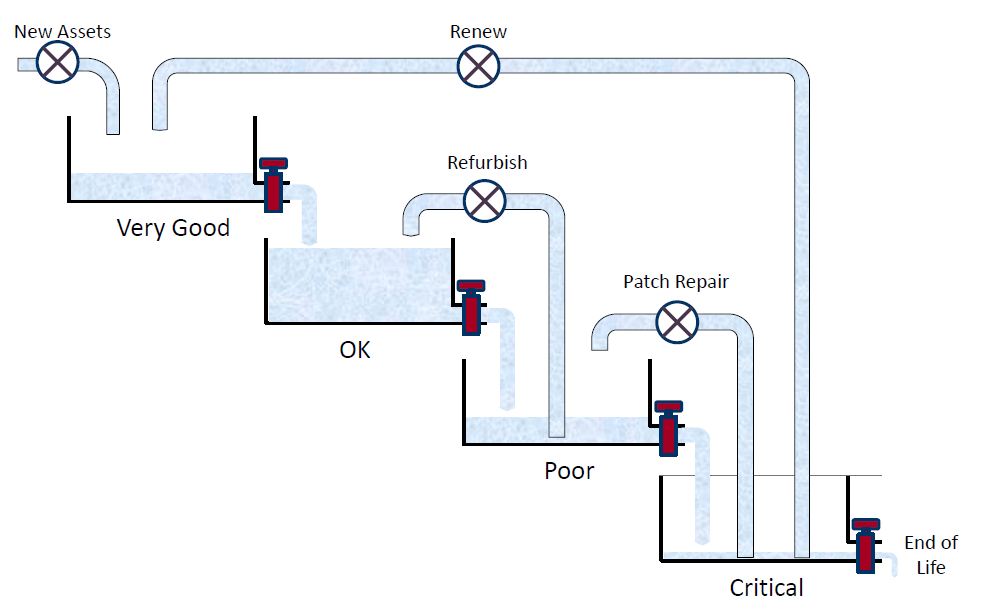With the eye-opening scale of some of the transport transactions we are involved in, perhaps we think once the deal is done, the excitement is over – and the asset just runs. But the new owners of the infrastructure will now face significant expenditure over the life of the contract, making sure that the asset continues to perform as required and is fit for hand back at the end of the concession.
In planning this expenditure, the operators will face important decisions on how to manage their asset: that is, how they schedule their work programme and prioritise their investment decisions. The questions that they must ask include:
Are we spending our money efficiently? Should it be prioritised differently? How do we maintain the asset at minimum cost without missing the performance targets? How should the allocation of maintenance budget change over time?
In broad brush terms they can follow three different approaches. They can:
Spend and save: bring the asset up to such a condition at the outset that no further expenditure is required.
Spend little and often: make smaller but frequent interventions aimed at keeping the asset condition stable.
Rot and Replace: the opposite of spend and save, ignore maintenance until an unacceptable level of service is provided – and then invest until an appropriate level is achieved.
A combination of the above.
Building up from its extensive knowledge in asset demand and its characteristics and evolution over time, Steer Davies Gleave has developed a “top-down” asset management tool which can help asset owners to optimise their maintenance strategies. The tool applies systems dynamics principles to model the behaviour of complex systems over time, using a number of feedback loops and considering external variables and/or constraints that affect the system. The model can be used at a strategic level to optimise the use of capital and operational expenditure over the life of assets.
Given a set of starting conditions, the model can simulate the performance of the system over time, reporting on the operating condition, the various types of expenditure and the penalty charges incurred. Changes can be made to assumptions and data values to rerun the model and compare the outputs.
As a management tool, the model can help to optimise the pattern of expenditure so that it can minimise costs and the risks of contractual failure and penalty charges. To do this it runs repeated cycles, searching through many different patterns of expenditure within a given total budget, to find the mix that minimises the penalty charges. This provides a rapid way of seeing how service provision can be improved within a given budget.
This is another tool that our technical team can use in supporting investors and their financial backers in proving and enhancing the values of their assets.
Written by Lucia Manzi
